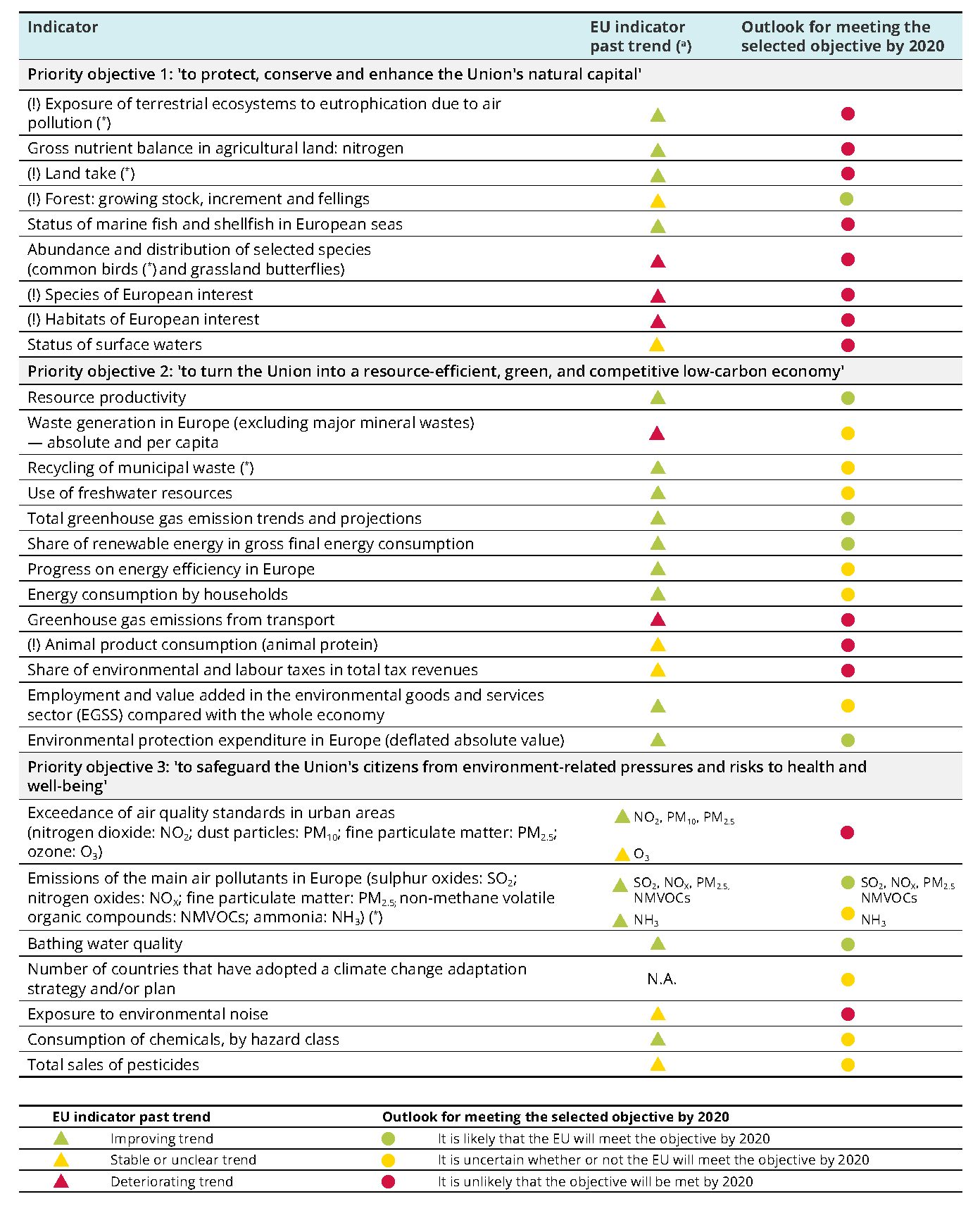EU News
|
|
Achieving EU's key 2020 environmental objectives slipping away
According to the European Environment Agency’s (EEA) updated environmental indicator report published yesterday, the European Union continues to fall short of achieving a number of environmental objectives by 2020, especially in areas aimed at protecting biodiversity and natural capital. When it comes to 'boosting sustainable, resource-efficient, low-carbon economy', trends and outlooks cause more concern compared to the assessment from last year, while progress in addressing environment-related threats to health remains rather mixed.
Image © Guido Sorarú
Hans Bruyninckx, EEA Executive Director yesterday said:
The ‘grow now, clean up later’ economic model that dominates our world and which does not account for climate change, pollution or the degradation of our natural capital is unsustainable. Europe needs to urgently step up efforts to transform its key systems of production and consumption towards sustainability.
The annual EEA Environmental Indicator Report 2018 provides an updated scoreboard that monitors progress in 29 selected environmental objectives that are relevant to achieving the three key priority objectives under the 7th Environment Action Programme (EAP) that address: natural capital (including biodiversity); sustainable, resource efficient, low-carbon economy; and people’s health and well-being. The scoreboard paints a bleak picture for progress in improving the EU’s natural capital. The overall progress is mixed for the other two priority objectives.
Compared to last year’s, this year’s scoreboard revised downwards the prospects of meeting three more objectives, important to the achievement of the 7th EAP priority objective that addresses sustainable, resource efficient low carbon growth. The outlooks for meeting the EU’s 2020 energy efficiency target and reducing the overall environmental impact of the housing sector by 2020 were revised from ‘likely’ to ‘uncertain'. Increases in the overall energy consumption and in the household sector were the main cause. The outlook for reducing the environmental impact of the mobility sector was also revised to ‘unlikely’ as greenhouse gas emissions from transport increased.
The report notes that for a number of indicators across the three 7th priority objectives the positive past trends seen in the scoreboard were mainly because of the low economic activity right after the 2008 financial crisis and that in several cases progress has slowed in recent years due to increased economic growth.
‘The ‘grow now, clean up later’ economic model that dominates our world and which does not account for climate change, pollution or the degradation of our natural capital is unsustainable. Europe needs to urgently step up efforts to transform its key systems of production and consumption towards sustainability.’ said Hans Bruyninckx, EEA Executive Director.
The report suggests that environment and climate policy implementation needs to be stepped up across the EU to meet the 2020 objectives. The results also highlight the need for mainstreaming environmental and climate objectives further into those policy domains that contribute most to the degradation of natural capital, human health impacts, inefficient use of natural resources and climate change. These policy domains include energy supply and demand, food production and consumption, transport and mobility and urban infrastructure development.
Indicator scoreboard by 7th Environment Action Programme thematic priority objective
Notes:
(a) The examined past trend period is unique to each indicator and is specified in Annex 2.
(*) The indicator past trend is also available at EEA member country aggregate level and not just at EU aggregate level. The colour
assessment remains the same for the EU and the EEA member country (including the EU) indicator past trend.
(!) The indicator has not been updated with more recent data in this year's report.
N.A. Non applicable.
Other key findings
Protect nature and strengthen ecological resilience: the outlook to 2020 remains bleak. There continues to be a considerable negative impact on the EU’s natural capital, to the point that the EU is not on track to reach almost all of the selected 2020 objectives. For example, common birds – a key indicator for biodiversity – continue to show a declining trend and over-fishing continues to be a problem. Also there are still no policies in sight to promote the necessary reductions in the rate of land take (land lost to artificial surfaces such as buildings and roads).
Boost sustainable, resource- efficient, low carbon growth: the outlook to 2020 remains mixed. The EU is on track to meet climate and renewable energy related targets for 2020, but it’s uncertain that the EU will meet its energy efficiency target. Waste generation has increased, while a reduction in environmental impact of production and consumption is uncertain for the housing sector and unlikely for the food and mobility sectors.
Effectively address environment-related threats to health and well-being: the outlook to 2020 remains mixed. There have been substantial reductions in emissions of air and water pollutants in recent decades but key concerns persist around air quality and noise pollution in urban areas and ammonia emissions, which arise mainly from agricultural production and increased the past three years. Chronic exposure to chemicals is also a continuing concern.



